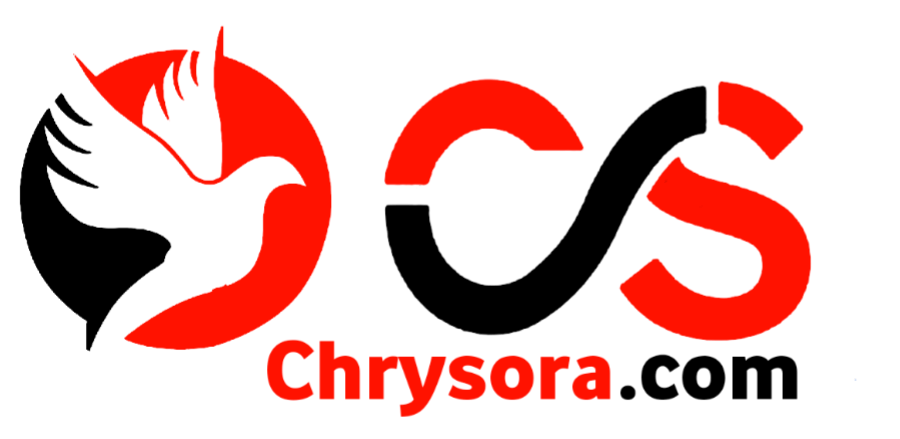Introduction
Navigating the world of crypto trading can seem like a formidable challenge for many. With over 4,000 cryptocurrencies in existence and various trading strategies and oiltraderai to choose from, it’s often hard to know where to start.
This guide aims to break down different cryptocurrency trading strategies – day trading, swing trading, position trading, and dollar-cost averaging (DCA) among others; explaining their workings and potential benefits.
Ready? Let’s dive in!
Cryptocurrency Trading Strategies
There are several cryptocurrency trading strategies, including day trading, swing trading, position trading, dollar cost averaging (DCA), and arbitrage trading.
Day Trading
Day trading is a speedy, high-stakes cryptocurrency strategy that involves buying and selling digital assets within the same 24-hour timeframe. Ideal for traders who appreciate the thrill of fast-paced decision-making, day trading capitalises on short-term crypto price fluctuations.
The key lies in its name: positions are opened and closed within one trading day, minimising potential losses from unpredictable overnight market swings. Profits compound quickly with successful trades, but bear in mind this approach requires constant vigilance over market trends and an effective risk management plan to ensure it remains profitable over time.
It’s strategic, it’s exciting – welcome to the world of crypto day trading.
Swing Trading
Swing trading is a popular cryptocurrency trading strategy that aims to capture short-to-medium-term price movements within a larger trend. Traders who employ this strategy typically hold their positions for several days to weeks, taking advantage of market fluctuations rather than trying to predict long-term trends.
By identifying key support and resistance levels, swing traders aim to buy at low points and sell at high points, profiting from the price swings in between.
A successful swing trader uses technical analysis tools such as chart patterns, moving averages, and momentum indicators to identify potential entry and exit points. They also consider market sentiment and news events that may impact the price of cryptocurrencies they are interested in trading.
With careful risk management techniques in place, swing trading offers traders the opportunity to profit from shorter-term price movements without having to constantly monitor the market.
It’s crucial for swing traders to develop a disciplined approach by setting clear entry and exit strategies based on their analysis.
Position Trading
Position trading is a popular crypto trading strategy among experienced traders. It involves taking long-term positions in cryptocurrencies, with the aim of benefiting from major price movements over an extended period of time.
Unlike day trading or swing trading, position traders are not concerned with short-term fluctuations and instead focus on capturing larger trends in the market.
To implement this strategy effectively, traders need to have a thorough understanding of fundamental analysis and market trends. They analyze factors such as project fundamentals, industry news, and overall market sentiment to identify promising assets for long-term investment.
Position traders typically hold their positions for weeks, months, or even years to allow their investments to grow steadily.
One key advantage of position trading is that it allows traders to avoid the stress and constant monitoring associated with shorter-term strategies. By taking a more patient approach, they can ride out temporary downturns and benefit from significant price increases over time.
Dollar Cost Averaging (DCA)
Dollar Cost Averaging (DCA) is a popular trading strategy in the world of cryptocurrencies. It involves regularly investing a fixed amount of money into a particular digital asset, regardless of its current price or market conditions.
The idea behind DCA is to lower the overall average cost of buying the asset over time, by taking advantage of market fluctuations.
Many traders find DCA appealing because it takes some of the stress out of timing the market. Instead of trying to predict when prices will be at their lowest, you simply invest consistently and let time work in your favor.
This strategy can be especially useful for beginners who may feel overwhelmed by all the volatility and uncertainty associated with crypto trading.
By spreading your investments across different time periods and price points, DCA helps mitigate risk and smooth out any sudden changes in value. While it may not yield immediate profits like day trading or swing trading strategies, dollar cost averaging provides a more stable approach that can result in long-term gains.
Arbitrage Trading
Arbitrage trading is a popular strategy in the cryptocurrency market that involves taking advantage of price differences for the same asset on different exchanges. Traders buy the asset at a lower price on one exchange and then sell it at a higher price on another, making a profit from the price discrepancy.
This strategy requires quick decision-making and execution, as prices can change rapidly in the volatile crypto market. By leveraging these opportunities, traders can enhance their profitability while minimizing risk.
Successful arbitrage traders rely on advanced automated trading bots and sophisticated algorithms to identify and execute trades swiftly, ensuring they capitalize on any potential gains.
Advantages of Cryptocurrency Trading
Cryptocurrency trading offers various advantages, including high volatility for potential profit gains, accessibility to global markets at any time, the flexibility of peer-to-peer transactions, and the opportunity to capitalize on market trends.
High volatility
The high volatility of cryptocurrencies is one of the key advantages that attracts traders to this market. Prices can experience significant fluctuations in a short period, presenting opportunities for profit if captured correctly.
However, it’s important to note that with higher potential returns also come higher risks. Traders need to be prepared for sudden price movements and have strategies in place to manage their risk effectively.
By staying ahead of market trends and using technical analysis indicators, traders can take advantage of these volatile conditions and make informed trading decisions.
Accessibility
Cryptocurrency trading offers a level of accessibility that is unmatched by traditional financial markets. Unlike stocks or commodities, cryptocurrencies can be bought and sold at any time of the day or night, giving traders the flexibility to participate in the market whenever it suits them.
Additionally, cryptocurrency exchanges are easily accessible online, with many platforms offering user-friendly interfaces that make trading straightforward even for beginners. This accessibility empowers traders to take advantage of market opportunities as they arise, without being limited by geographical location or time constraints.
Whether you’re an experienced trader or just starting out, the accessibility of cryptocurrency trading allows you to actively engage in this exciting and potentially lucrative market.
24-hour market
The cryptocurrency market operates 24 hours a day, 7 days a week, unlike traditional stock markets that have set trading hours. This means that traders have the flexibility to trade at any time that suits them, without being limited to specific opening and closing times.
The continuous nature of the crypto market allows for greater opportunities to seize profitable trades and react quickly to market movements. It also enables traders from different time zones around the world to participate actively in trading activities.
Whether you’re an early bird or a night owl, the 24-hour crypto market ensures that there’s always something happening and opportunities waiting to be explored. So take advantage of this round-the-clock availability and stay ahead of the game!
Peer-to-peer transactions
One of the advantages of cryptocurrency trading is the ability to engage in peer-to-peer transactions. Unlike traditional financial systems, where intermediaries such as banks are involved in every transaction, cryptocurrencies allow for direct transfers between individuals.
This means that traders can execute transactions without relying on a centralized authority or third-party involvement.
Peer-to-peer transactions offer several benefits for traders. Firstly, they eliminate the need for intermediaries, reducing fees and processing times associated with traditional banking systems.
Secondly, peer-to-peer transactions provide greater privacy and security since personal information is not disclosed during the transfer process. Lastly, this decentralized nature promotes transparency and trustworthiness as all transactions are recorded on a public blockchain that can be audited by anyone.
Factors to Consider in Crypto Trading Strategies
Consider various technical analysis indicators, fundamental analysis, risk management techniques, and market trends to develop profitable crypto trading strategies. Mastering these factors is crucial for successful trading in the volatile cryptocurrency market.
Discover how they can enhance your returns and minimize risks by diving deeper into this section.
Technical analysis indicators
Technical analysis indicators play a crucial role in developing an effective crypto trading strategy. These indicators help traders make informed decisions based on historical price data and patterns. Here are some commonly used technical analysis indicators in cryptocurrency trading:
- Moving Averages: Moving averages smooth out price data and provide trend direction. Traders often use the 50-day and 200-day moving averages to identify long-term trends.
- Relative Strength Index (RSI): RSI measures the speed and change of price movements. It indicates whether a particular cryptocurrency is overbought or oversold, helping traders identify potential reversal points.
- Bollinger Bands: Bollinger Bands consist of a middle band (simple moving average) and two outer bands that represent standard deviations from the middle band. They help traders identify volatility and potential breakouts or reversals.
- MACD (Moving Average Convergence Divergence): MACD is used to measure momentum by comparing short-term and long-term moving averages. It helps traders identify bullish or bearish signals.
- Fibonacci Retracement: Fibonacci retracement levels highlight potential support and resistance areas based on the Fibonacci sequence. Traders use these levels to identify entry or exit points.
- Volume Analysis: Volume analysis considers the trading volume alongside price movements to assess market strength and confirm trends or reversals.
- Ichimoku Cloud: The Ichimoku Cloud provides information about support/resistance levels, trend direction, and potential breakout points through various components like Kumo, Tenkan-sen, Kijun-sen, etc.
- Stochastic Oscillator: The stochastic oscillator compares a cryptocurrency’s closing price to its price range over a specific period of time, indicating overbought or oversold conditions.
- Average True Range (ATR): ATR measures market volatility by calculating the average range between high and low prices over a certain period of time.
- Parabolic SAR: Parabolic SAR helps determine potential entry and exit points by plotting dots above or below the price chart based on trend direction.
Fundamental analysis
Fundamental analysis is an essential aspect of developing a successful crypto trading strategy. It involves examining the underlying factors that influence the value and performance of a cryptocurrency.
This can include assessing the project’s team, technology, use case, market demand, regulatory environment, competition, and overall industry trends. By analyzing these fundamental aspects, traders can make more informed decisions about when to buy or sell cryptocurrencies.
While technical analysis focuses on charts and patterns, fundamental analysis provides a broader perspective on the intrinsic value of a cryptocurrency. Incorporating both types of analysis into your trading strategy can help you identify potential opportunities and manage risks effectively in the volatile crypto market.
Risk management
Managing risk is a crucial aspect of any successful crypto trading strategy. Without proper risk management, traders expose themselves to unnecessary losses and potential financial ruin.
By implementing effective risk management techniques, traders can protect their capital and increase the chances of long-term profitability.
One key element of risk management involves setting clear stop-loss orders. These are predetermined price levels at which traders will exit a trade if the market moves against them.
By placing stop-loss orders, traders limit their potential losses and ensure they do not let emotions dictate their decisions.
Another important aspect is position sizing. Traders should never allocate too much of their portfolio on a single trade, as this can lead to significant losses in case it goes wrong.
Market trends
Market trends play a crucial role in developing successful crypto trading strategies. By analyzing the patterns and movements of various cryptocurrencies, traders can identify potential opportunities for profit.
Understanding market trends involves studying historical data, tracking price fluctuations, and identifying recurring patterns. This information allows traders to make informed decisions about when to buy or sell their assets.
By staying up-to-date with the latest market trends, traders can increase their chances of making profitable trades and staying ahead in the dynamic world of cryptocurrency trading.
Conclusion
In conclusion, developing a well-planned crypto trading strategy is essential for success in the highly volatile cryptocurrency market. Whether you choose day trading, swing trading, or dollar-cost averaging, it is crucial to understand technical analysis indicators and market trends while effectively managing risks.
By mastering proven strategies and continuously enhancing your skills, you can maximize profits and navigate the world of cryptocurrency trading with confidence.












Add Comment